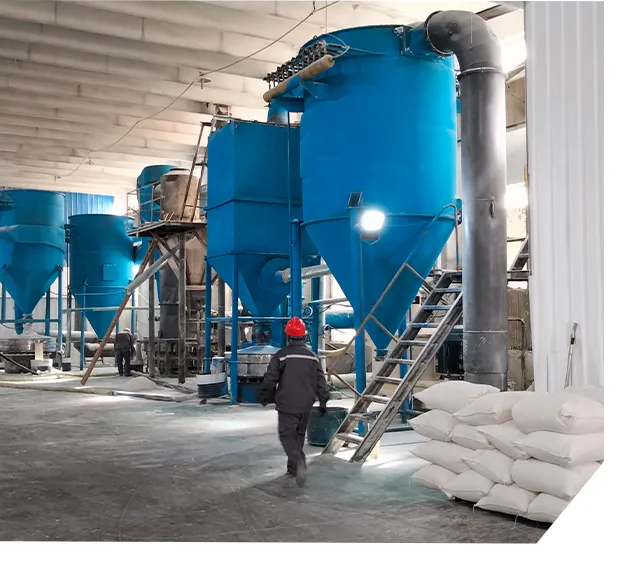Exploring the Intersection of Paint, HPMC, and Modern Applications
In the realm of modern materials and coatings, the synergy between traditional paint formulations and innovative additives like Hydroxypropyl Methylcellulose (HPMC) is becoming increasingly significant. This fusion not only enhances the performance of paints but also addresses contemporary demands for sustainability and improved application methods.
Understanding HPMC
Hydroxypropyl Methylcellulose (HPMC) is a cellulose-based polymer derived from natural cellulose. It is widely recognized for its water-retention properties, thickening ability, and excellent film-forming characteristics. In the context of paint, HPMC acts as a crucial additive, influencing several key attributes of the final product.
Enhancing Paint Performance
One of the primary roles of HPMC in paint formulations is its ability to improve viscosity and stability. Viscosity is a critical factor that affects how paint flows and spreads on surfaces. By incorporating HPMC into paint formulations, manufacturers can achieve the desired thickness, ensuring that the paint adheres well to substrates and flows smoothly without sagging or running.
Additionally, HPMC contributes to the paint's overall stability. Paints without adequate stabilizers may separate over time, leading to inconsistencies in color and texture. The inclusion of HPMC helps maintain a homogeneous mix, prolonging the shelf life of the product and ensuring that the paint performs as intended during application.
Water Retention and Open Time
paint hpmc

Another significant advantage of using HPMC in paint is its superior water-retention capability. This characteristic is particularly beneficial in exterior paints, which must withstand various weather conditions. By retaining water, HPMC allows for extended open time, meaning that the painter has more time to work with the paint before it dries. This property is especially valuable in large projects or during humid conditions, as it ensures a consistent finish without the need for frequent touch-ups.
Moreover, the water-retaining ability of HPMC aids in the curing process of paints. It facilitates proper film formation by preventing premature drying, which can lead to defects such as cracking or peeling. As such, incorporating HPMC not only enhances the aesthetic quality of the paint but also its longevity and durability.
Sustainability Considerations
In today's environmentally conscious market, the push for sustainable and eco-friendly products is more pronounced than ever. HPMC, being a plant-derived polymer, aligns well with these sustainability goals. Its use in paint formulations contributes to the reduction of volatile organic compounds (VOCs), which are harmful to both human health and the environment. As industries strive to minimize their ecological footprint, HPMC provides a viable solution for creating greener paint products.
Furthermore, the versatility of HPMC allows manufacturers to formulate low-VOC and water-based paints without sacrificing performance. These products not only meet regulatory standards but also cater to consumer demand for safer, eco-friendly options. As a result, HPMC is a pivotal component in the development of modern paints that prioritize environmental responsibility.
Conclusion
The incorporation of Hydroxypropyl Methylcellulose into paint formulations represents a significant advancement in the coatings industry. By enhancing viscosity, stability, water retention, and open time, HPMC helps paint manufacturers produce high-quality products that meet the demands of today's market. Additionally, its sustainable properties position it as a crucial ingredient in the development of eco-friendly paints that contribute to a healthier planet.
As the industry continues to evolve, the collaboration between traditional paint technologies and innovative additives like HPMC will undoubtedly shape the future of coatings. This interdisciplinary approach not only offers immediate benefits in terms of performance and application but also aligns with broader environmental goals, providing a pathway to more sustainable practices in the paint industry. As we move forward, continued exploration and optimization of these materials will ensure that we can paint a brighter and greener future.
-
Rdp Powder: Key Considerations for Wholesalers in the Building Materials IndustryNewsJul.08,2025
-
Key Considerations for Wholesalers: Navigating the World of Hpmc - Based ProductsNewsJul.08,2025
-
Hpmc Detergent: Key Considerations for WholesalersNewsJul.08,2025
-
Key Considerations for Wholesalers: China Hpmc For Tile Adhesive, Coating Additives, Concrete Additives, and MoreNewsJul.08,2025
-
Crucial Considerations for Wholesalers: Navigating the World of Construction MaterialsNewsJul.08,2025
-
Key Considerations for Wholesalers Sourcing Additive For Cement, Additive For Concrete, Additive For Putty from Additive Manufacturer Shijiazhuang Gaocheng District Yongfeng Cellulose Co., Ltd.NewsJul.08,2025




